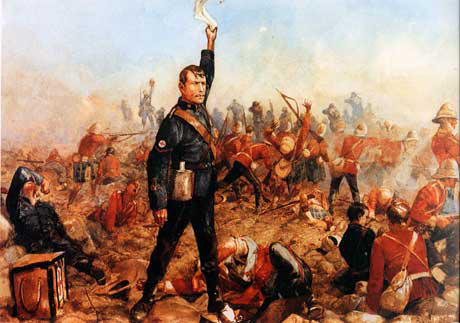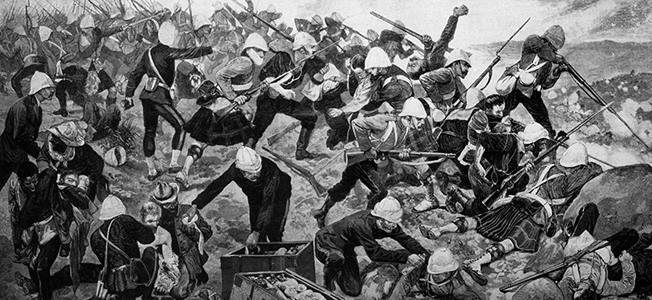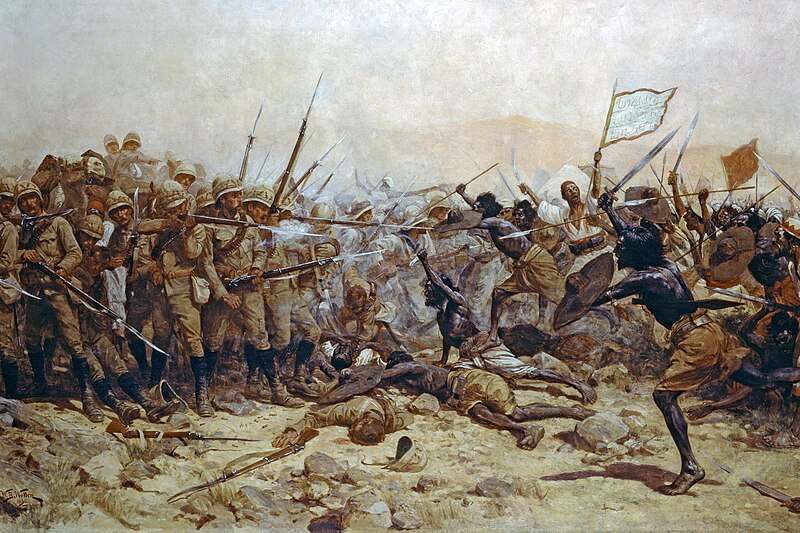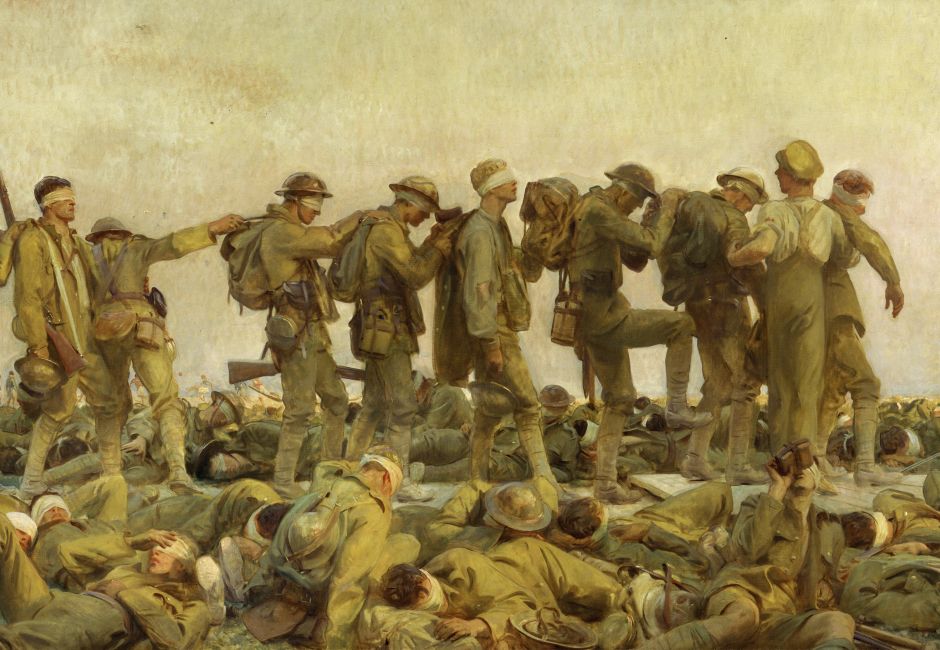
Month: December 2018
Some war art I found
The Battle of Waterloo
The Charge of the Light Brigade in the Crimean war
The Zulu War
The Battle of Maiwand
The Boer War
Majuba Hill,The Beginning of the End of the British Empire


The Sudan
WWI









I would never say no to one of this puppies. But I am afraid that its fate is to become a safe queen for some rich Colt Collector!













In the early 1950’s, Colt realized that they were behind the times and didn’t have a revolver chambered for the .357 Magnum.
The previous New Service model had been discontinued during WWII, and was a heavy frame, too heavy for constant carry use. Colt brushed off their medium E frame, changed it to add an internal spring-loaded firing pin and heat treated it to increase its strength, calling its new creation the “I” frame.
The new gun was ready for production in 1953 and Colt called it “The Colt 357”. Colt outfitted the revolver with adjustable sights and gave it a more carefully fitted and tuned action.
Then Colt used the old E frame for the Trooper, and gave it adjustable sights as well, chambered for .38 Special and .22 L.R.
When Colt came out with the Python, shooters who had the money went to the new Python and those who didn’t mostly bought the Trooper, leaving the Colt .357 in limbo.
It was discontinued in 1961 after only 15,000 had been produced, at which time Colt moved the Trooper to the I frame and offered it in .357 Magnum as well as .38 and .22.
This Colt Trooper MK III is a six shot revolver chambered for .22 WMR and built on the heavier I frame.

Smith & Wesson Model 915
Here is some more information about this fine Semi Automatic Pistol that I once owned & shot a lot! For which I am VERY sorry that I had to sell years ago!
Grumpy
Smith & Wesson Model 910
| Smith & Wesson Model 910 and 915 | |
|---|---|
| Type | Semi-automatic pistol |
| Place of origin | United States |
| Production history | |
| Manufacturer | Smith & Wesson |
| Produced | 1992–2006 |
| Specifications | |
| Weight | approximately 28 ounces |
| Length | 7 3⁄8 inches |
| Barrel length | 4 inch barrel |
|
|
|
| Caliber | 9×19mm Parabellum |
| Action | Short recoil DA/SA |
| Feed system | 10- or 15- round detachable box magazine |
| Sights | Fixed three-dot; night sights available; one variant of the Model 910 produced with a fiber-optic front sight. |
The Smith & Wesson Model 910 and 915 are two similar full-sized, 9×19mm Parabellum (9mm Luger), short-recoil-operatedd
History[edit]
Both the Model 915 and the Model 910 were part of the “Value Series” pistols made by Smith and Wesson, and incorporated several features to cut the costs associated with manufacturing “3rd Generation” Smith and Wesson pistols.[1]
Both the Model 915 and Model 910 were made with only one safety/decocker lever (left side) in order to save costs. The Model 915 was made with all-metal parts, while the follow-on Model 910 substituted a plastic rear sight, plastic recoil guide rod, and plastic magazine release button to further save on manufacturing expenses.[2] The earlier Model 915 also reportedly has a lug on the barrel and a corresponding cut in the slide for tighter lock up. The later 910 has no lug on the barrel, nor a slide cut, reportedly affecting its inherent accuracy compared to the earlier 915. Both models have a reputation as reliable and robust.[3]
The Model 915 was sold with a 15 shot double-stack magazine. The S&W Model 910 was initially sold with a 10 shot double-stack magazine to comply with the Violent Crime Control and Law Enforcement Act of 1994; the 910 was upgraded to a 15-round double-stack magazine in 2005, when that law was sun-set. Magazines for the 915 and 910 are the same overall design as those used in the 59XX-series pistols and are interchangeable.[4]
References[edit]
- Jump up^ Page 360-361, The Standard Catalog of Smith and Wesson, 4th Edition, by Jim Supica and Richard Nahas, published by Gun Digest Books and Krause Publications, Iola, WI, 2016.
- Jump up^ Page 360-361, The Standard Catalog of Smith and Wesson, 4th Edition, by Jim Supica and Richard Nahas, published by Gun Digest Books and Krause Publications, Iola, WI, 2016.
- Jump up^ Numerous postings from the Smith & Wesson Forum, search term “915” or “910,” at http://smith-wessonforum.
com/smith-wesson-semi-auto- pistols/ - Jump up^ Page 360-361, The Standard Catalog of Smith and Wesson, 4th Edition, by Jim Supica and Richard Nahas, published by Gun Digest Books and Krause Publications, Iola, WI, 2016.

| Beretta M1934 | |
|---|---|
|
Beretta M1934.
|
|
| Type | Semi-automatic pistol |
| Place of origin | Kingdom of Italy |
| Service history | |
| In service | 1935–1991 |
| Used by | Royal Italian Army |
| Wars | World War II Tuareg rebellion (1990–1995) |
| Production history | |
| Manufacturer | Beretta |
| Produced | 1934–1991 |
| No. built | 1,080,000 |
| Specifications | |
| Weight | 660 g (1 lb 7 oz) (Unloaded) |
| Length | 152 mm (6 in) |
| Barrel length | 94 mm (3.7 in) |
|
|
|
| Cartridge | .380 ACP 9×17mm Corto |
| Action | Blowback |
| Muzzle velocity | 229 m/s (750 ft/s) |
| Feed system | 7 + 1-round detachable box magazine |
| Sights | Fixed front blade and rear notch |
The Beretta Model 1934 is a compact, semi-automatic pistol which was issued as a standard service firearm to the Italian armed forcesbeginning in 1934. It is chambered for the 9 mm Corto, more commonly known as the .380 ACP.
History and usage[edit]
Armi Beretta SpA of Gardone Val Trompia has a history in firearms manufacturing reaching back to 1526, when they were established as a maker of barrels. But it was not until 1915 that, responding to the needs of the military during World War I, they produced their first pistol, the model 1915. Beretta has become one of the world’s largest pistol makers and the model 1934 (M1934) was their most numerous product in the World War II era.
It was designed and purpose-built for the Italian armed forces. In the early 1930s, the Italian army was impressed by the Walther PP pistol. Beretta did not want to lose a big military contract to their German competitor and designed the M1934 for the Italian Army which accepted it in 1937. This model was followed by the M1935, which was similar to the M1934 in most respects, except that it fired a .32 ACP (7.65 mm Browning) cartridge.
Pistols made during the Fascist Era are marked with their year of manufacture in two forms: the conventional Julian date in Arabic numerals and the date in the Fascist Era in Roman numerals. The Fascist calendar commenced on 28 October 1922, so a pistol from 1937 may carry either “XV” or “XVI” as its Fascist year. Pistols taken by the armed forces usually exhibit acceptance marks stamped into the frame on the left just above the grip: “RE” (Regio Esercito) for the army, “RM” (Regia Marina) for the navy, or “RA” (Regia Aeronautica) for the Air Force, always in the form of an Eagle wearing a Royal Crown for the Royal air force. Police pistols may be marked “PS” (Pubblica Sicurezza). The Romanian military, at the time an Axis power, also purchased model 1934 (and 1935) pistols. The calibre marking appears as 9 mm Scurt (short in Romanian) rather than 9 mm Corto.[1] Romanian Army M1934’s differ from Italian M1934’s in that the Romanian pistols use the Russian sight picture, where the Italian pistols use the standard sight picture used by Western armies.
An M1934, serial number 606824, was used by Nathuram Godse in the 1948 assassination of Mahatma Gandhi. The pistol, manufactured in 1934, was carried by an officer during Italy’s invasion of Abyssinia and subsequently taken by a British officer as a war trophy. It is not known how it came to India, but Godse was given the unlicensed firearm by a co-conspirator.[2]
Design[edit]
Fitted with the characteristic Beretta open slide, the M1934 has a very reliable feeding and extraction cycle; the elongated slot in the top of the slide acts as the ejection port. It is made with relatively few parts and very simple to maintain. The M1934 is very robust in construction with a long service life if properly maintained.[citation needed]
9mm Corto (.380 ACP) is less powerful than most other military service pistol cartridges, such as 9mm Parabellum or .45 ACP. The magazine capacity is only 7 rounds. When the empty magazine is removed it no longer holds the slide back. The slide will come forward and close the gun unless it is held open by application of the safety, a separate operation, and this slows down the reloading of the pistol.[citation needed]
Service[edit]
 Algeria[3]
Algeria[3] Kingdom of Italy – Royal Italian Army
Kingdom of Italy – Royal Italian Army Nazi Germany – under designation Pistole 671(i)
Nazi Germany – under designation Pistole 671(i) Finland “900 PIST 34 BERETTA”[citation needed]
Finland “900 PIST 34 BERETTA”[citation needed] Libya[4]
Libya[4] Mali:People’s Movement for the Liberation of Azawad[5]
Mali:People’s Movement for the Liberation of Azawad[5] Kingdom of Romania – Romanian Royal Army[6]
Kingdom of Romania – Romanian Royal Army[6]
The weapon was extensively used in World War II by Italian, German and Romanian forces, and quite a few were captured by Allied forces during the war.
Production[edit]
From 1934 to 1992, about 1,080,000 units were produced globally
U.S.—In a rash of tragedies all across the United States, every single bump stock in the nation was tragically lost in various boating accidents earlier this week.
Coincidentally, the bump stocks have just been banned by the Trump administration. Since all the bump stocks have been destroyed, it’s now impossible for the ATF to confiscate them or fine people who did not destroy them.
“Well, I guess our job is done,” an ATF representative said. “We were gonna have to make sure people complied with this unilateral executive order, but now I guess we can just harass gun owners for other stuff. Worked out pretty nicely for all of us, I think.”
It’s not clear why gun owners were taking their bump stocks boating. Some have theorized they were using them to fish, or just wanted to make sure they weren’t stolen why they were away. Whatever the case, it’s tragic that the bump stocks are now all at the bottom of lakes, rivers, and oceans from coast to coast.




